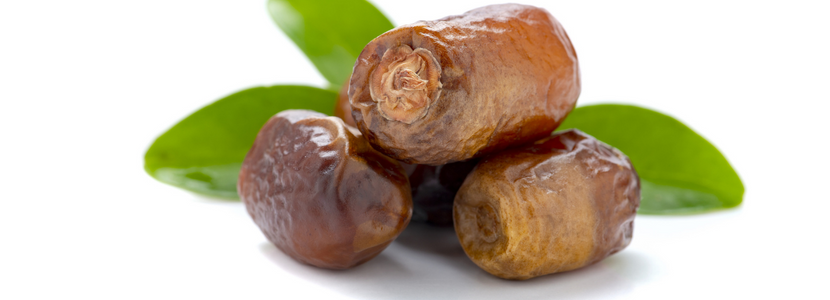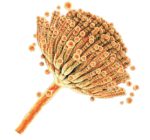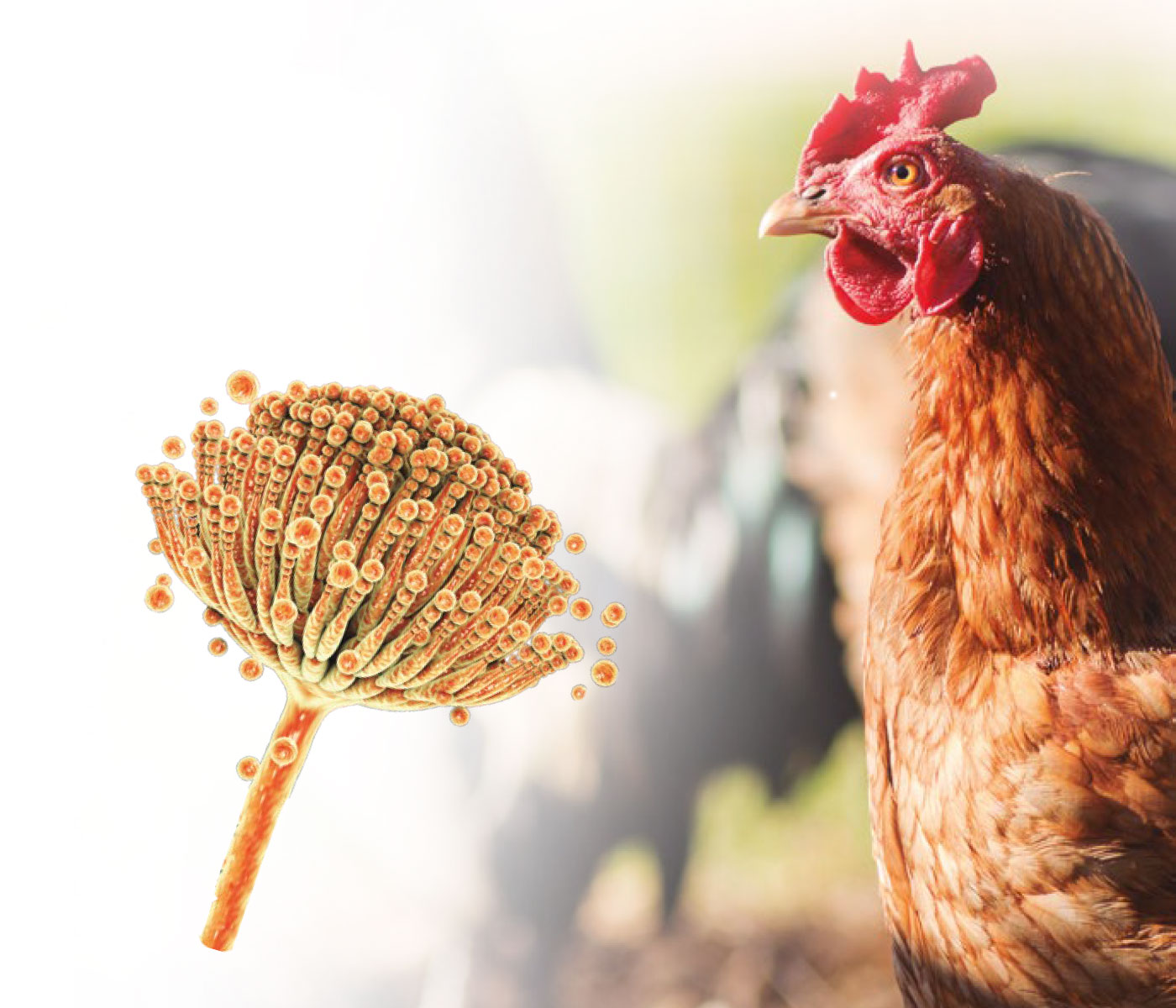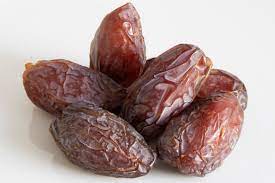 28 Nov 2022
28 Nov 2022
Date pits (DP) a potential tool for the mitigation of aflatoxin B1 (AFB1)contamination in broilers.
Mycotoxins are toxic alkaloid compounds, produced by fungi belonging to the following groups: Aspergillus, Fusarium, Penicillium, Claviceps and Alternaria (Jaynes et al., 2007; Huwig et al. , 2001).

Mycotoxins are regarded as major health hazards in poultry. This is particularly true for aflatoxins, which are compounds produced by strains of Aspergillus flavus—parasiticus,. These are capable of contaminating a wide range of crops, amongst which some examples are: corn, groundnut, and wheat [2,3]. Crops contaminated with these fungal species and their toxic metabolites can significantly impact the health status of humans and animals. As well as generating economic losses amongst producers, and hampering commercial opportunities [4,5].
Among the different kinds of aflatoxins, aflatoxin B1 (AFB1) is the most predominant and toxic mycotoxin in poultry. For such reasons, in order to safeguard animal health and welfare the European Commission has established a maximum allowed concentration of AFB1 at 0.02 mg/kg in poultry feed. Aiming to reduce health hazards associated with Aflatoxin contamination while also preventing the transmission of these toxic substances into meat and egg products.
AFB1 is converted into secondary toxic metabolites in the liver, causing injury and alterations in hepatic function. Numerous studies have demonstrated the harmful effects of AFB1 contamination in broilers, causing reductions in growth performance and overall animal health. Affecting health and productive parameters such as: carcass quality , hepatic damage], immune response, an enhancing susceptibility to infectious diseases. Resulting in higher mortality rates and considerable economic losses.
Under a scenario of growing concerns and greater awareness the market for feed mycotoxin detoxifiers has experienced significant growth. Harnessed by a greater focus on animal health, and the need to improve animal feed quality as a means to assure high safety levels in animal products.
Numerous approaches for the detoxification or inactivation of AFB1 have been employed including physical, chemical, and biological methods. Natural phytochemicals have been recently evaluated for their aflatoxin adsorption capacities. Agricultural wastes, which are wealthy sources of beneficial phytochemicals, have been examined for their ability to neutralize aflatoxin toxicity, and several studies have demonstrated that polyphenols from various sources have the potential to decrease the concentration and toxicity of AFB1. From the variety of different agricultural wastes that have been evaluated, Date pits represent a potential alternative for Aflatoxin neutralization.
Date pits are a byproduct of the date palm (Phoenix dactylifera L.) processing industry, and they represent approximately 10% of the date’s total weight. Recent research studies have shown that date pit meal can be included up to a certain level as an alternative feed ingredient in poultry diets.. Besides their nutritional values which ha have been reviewed recently reviewed by Attia et al date pits have been also applied as effective adsorbents for certain types of mycotoxins from contaminated milk. As the presence of oxygenated functional groups, such as phenolic compounds, confers them a mycotoxin adsorption capacity.

It has been demonstrated that the inclusion of DP in broiler feed reduces the negative impacts on carcass quality, biochemical variables, and hepatic alterations associated with aflatoxicosis. However, there is still limited knowledge regarding the use of date pits as mycotoxin adsorbents in broilers.
Study
The current study was carried out to evaluate the influence of dietary DP supplementation at different levels on productive and health parameters in broilers. Including: growth efficiency, carcass yields and visceral organs, serum biochemical parameters, enzymatic activity, ileal histomorphology, apparent total tract digestibility of nutrients. As well as evaluating residual AFB1 levels within the liver of broilers fed with AFB1-contaminated diets.
Materials and methods
This experiment was performed in the poultry farm of the Animal Production Department at King Saud University. A total of 360 one-day-old Ross 308 straight-run broiler chicks of similar initial body weight (45.21 ± 0.36 g) were placed in battery cages (n = 6 chicks/cage; 30 kg BW/m2) in an environmentally controlled room and were fed a basal starter diet until 10 d of age. At 11 d of age, each cage was randomly assigned to 1 of 6 dietary treatments (10 replications each) with a completely randomized design.

These following were the assigned treatments:
The trial had a total duration of 20 d.
Results and Discussion
Impacts on growth performance
Broilers fed the PC diet had a decreased DFI for the grower and overall phases (p < 0.01) and a reduced DWG and PEF and increased FCR in the grower, finisher, and overall phases (p < 0.001) compared with those fed the NC diet.
In contrast, the inclusion of DP in the PC diet either at 2 or 4% increased the DWG to similar levels as in the NC groups for the finisher and overall phases, improved the PEF for the finisher phase, and decreased the FCR in the grower, finisher, and overall phases (p < 0.001).
The inclusion of 4% DP to the PC diet increased the DWG to similar levels as in the NC groups for the grower phase and improved the PEF for the overall phase (p < 0.001).
Impacts on carcass parameters
Broilers fed the PC diet had a decreased dressing percentage and breast meat yield and increased proportional liver weight (p < 0.001) compared with those fed the NC diet.
No differences were detected in the relative weights of the leg meat yield, abdominal fat, bursa, spleen, and empty gizzard among the treatments
Conclusions
Source: Abstract taken and modified fromAlharthi AS, Al Sulaiman AR, Aljumaah RS, Alabdullatif AA, Elolimy AA, Alqhtani AH, Al-Garadi MA, Abudabos AM. “Protective Effect of Date Pits on Growth Performance, Carcass Traits, Blood Indices, Intestinal Morphology, Nutrient Digestibility, and Hepatic Aflatoxin Residues of Aflatoxin B1-Exposed Broilers.” Agriculture. 2022; 12(4):476.
Subscribe now to the technical magazine of animal nutrition
AUTHORS

Hybrid Rye Potential in Laying Hen Feed Rations
Gwendolyn Jones
A day in the life of phosphorus in pigs: Part I
Rafael Duran Giménez-Rico
Use of enzymes in diets for ruminants
Braulio de la Calle Campos
Minerals and Hoof Health in the Pregnant Sow
Juan Gabriel Espino
Impact of Oxidized Fats on Swine Reproduction and Offspring
Maria Alejandra Perez Alvarado